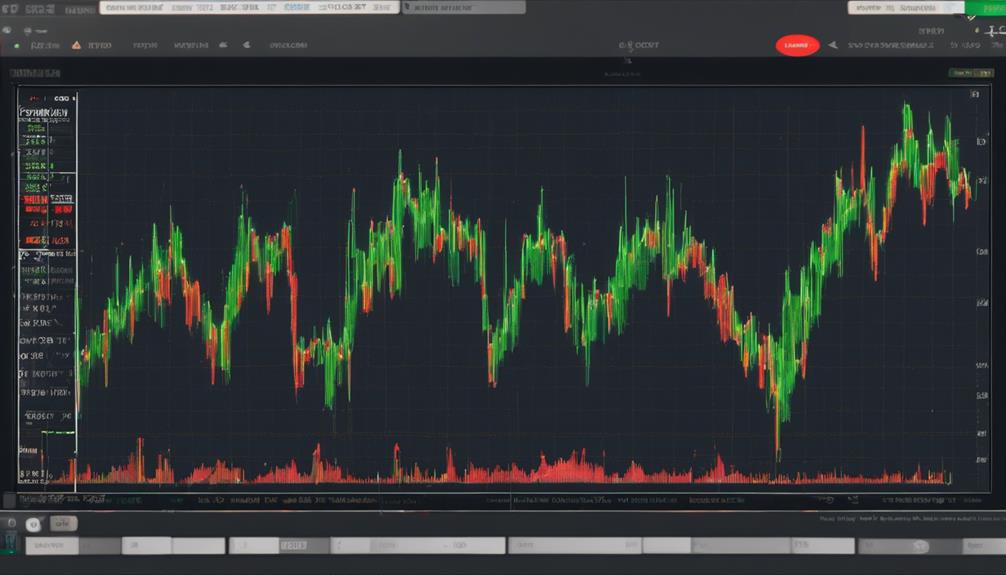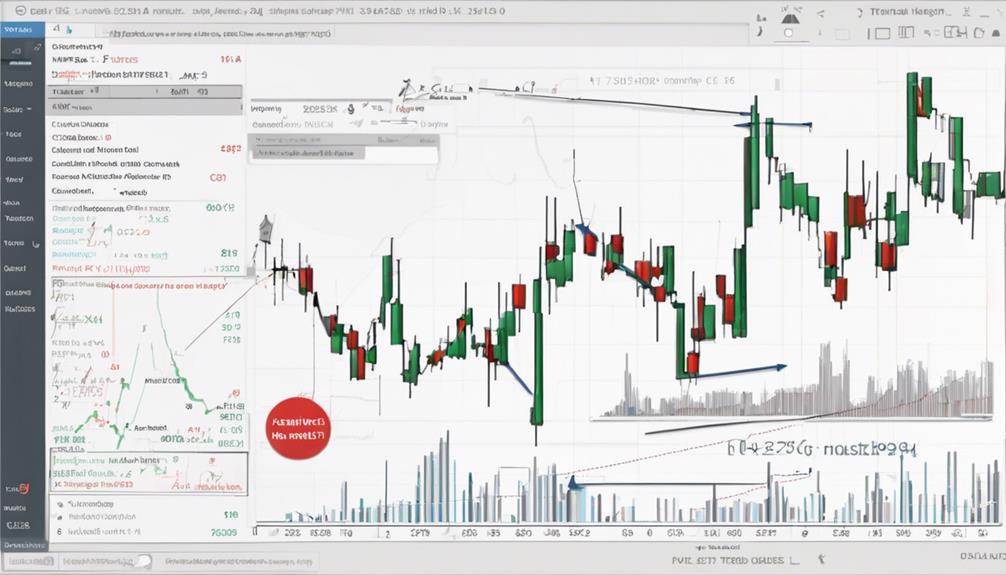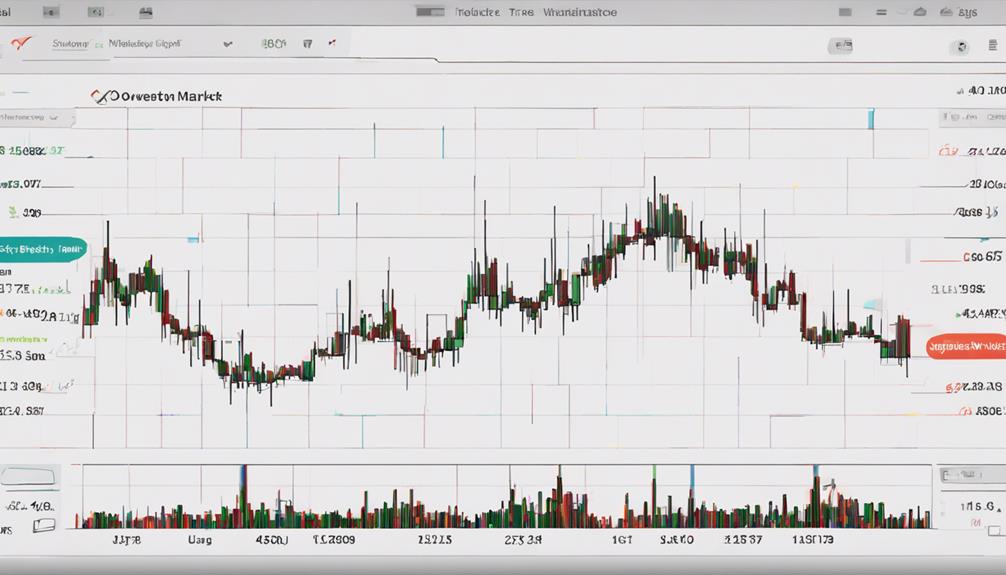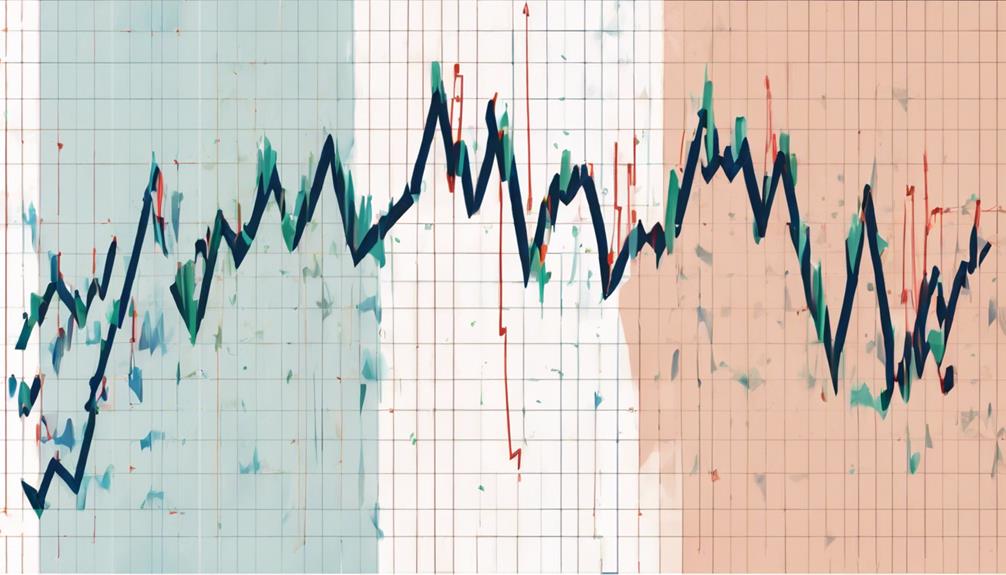The Zig Zag Indicator, a tool highly regarded for its ability to discern market trends and turning points, holds a crucial role in the realm of technical analysis. Its capacity to sift through market noise and spotlight significant price movements allows traders to pinpoint key support and resistance levels.
When paired with complementary tools like Fibonacci retracements and Elliott Wave Theory, the Zig Zag Indicator can furnish traders with a holistic perspective on market dynamics, refining their timing decisions. However, as with any tool, understanding its limitations and the importance of corroborating signals from other indicators is essential for optimal trend detection and trade execution.
Definition of Zig Zag Indicator
The Zig Zag Indicator, a valuable tool in technical analysis, is utilized to filter out market noise and pinpoint trends with precision. This indicator operates by plotting points on a chart based on significant price reversals, highlighting trend changes effectively. It helps traders identify swing highs and lows in the market, focusing on price movements that exceed a predetermined percentage threshold.
The Zig Zag Indicator simplifies complex price charts by connecting major highs and lows, providing a clearer picture of the underlying trend. By emphasizing the price movements that matter most, this tool assists traders in understanding the market direction more clearly. It works particularly well in strongly trending markets, where it can be used in conjunction with other technical analysis indicators for confirmation.
The Zig Zag Indicator's ability to filter out noise and emphasize crucial price points makes it a valuable asset for traders looking to make informed decisions based on trend analysis.
How to Use Zig Zag Indicator

Utilizing the Zig Zag Indicator effectively involves understanding its function in identifying significant price reversals and trends within the market. This technical analysis tool filters out noise in price movements by focusing on changes that exceed a predetermined percentage threshold.
Traders have the flexibility to adjust this threshold to adapt to varying market conditions and different financial instruments. As the indicator recalculates based on new price data, it provides a dynamic reflection of the most recent market shifts.
To enhance its utility, the Zig Zag Indicator is commonly used alongside other technical analysis tools to confirm trends and support trade decision-making processes. By adjusting its settings and combining it with complementary indicators, traders can refine their market analysis and gain insights into potential entry and exit points within the market trends.
Calculating Zig Zag Indicator

A fundamental aspect of the Zig Zag Indicator is its calculation methodology based on a customizable percentage threshold to identify significant price movements. This unique feature allows traders to adjust the indicator to filter out noise and focus on essential price changes effectively.
The Zig Zag indicator marks swing highs and swing lows on the price chart, providing a visual representation of trends and potential reversals in the market. Additionally, by dynamically updating as new price data is received, it accurately reflects the most recent shifts in the market environment.
- Traders can customize the percentage threshold to adapt the Zig Zag indicator to different market conditions.
- The indicator helps in filtering noise by focusing on significant price points rather than minor fluctuations.
- Identifying swing highs and swing lows assists traders in pinpointing potential trend changes and market reversals efficiently.
Analyzing Market Trends With Zig Zag

Enhancing market trend analysis, the Zig Zag Indicator efficiently connects significant highs and lows on price charts. By filtering out noise and pinpointing important price movements, it aids traders in identifying potential trend changes and key turning points.
Often used in conjunction with Elliott Wave Theory, the Zig Zag Indicator simplifies trend analysis by plotting points for price reversals. This method helps in confirming trend directions and highlighting critical levels for decision-making. Traders have the flexibility to adjust the percentage threshold of the indicator based on varying market conditions and timeframes, enabling more accurate trend identification.
Common Mistakes With Zig Zag Indicator

Misinterpreting temporary price fluctuations as significant trend reversals is a prevalent error traders make when utilizing the Zig Zag Indicator. This mistake can lead to misguided trading decisions based on short-term movements rather than actual trend shifts.
To avoid such errors, traders should consider the following:
- Focusing solely on the most recent Zig Zag line without considering the overall market context may result in overlooking the broader trend direction.
- Overlooking the lagging nature of the Zig Zag indicator can lead to delayed entry or exit points, missing out on optimal trading opportunities.
- Relying too heavily on Zig Zag signals without seeking confirmation from other technical indicators can increase the likelihood of false signals and inaccurate trend predictions.
How Can the Zig Zag Indicator Help Identify Market Trends?
The zig zag indicator for day trading can help identify market trends by highlighting the price movements that deviate from the average. It plots points on the chart, making it easier to spot the overall direction of the trend and potential reversal points. This can be valuable for traders looking to make informed decisions.
How Can I Use the Zig Zag Indicator to Identify Market Trends?
The simplified Zig Zag indicator is a useful tool for identifying market trends. By filtering out minor price movements and focusing on significant price changes, it can help traders spot potential trend reversals and confirm existing trends. Its simplicity makes it a popular choice for many traders looking to forecast market direction.
Frequently Asked Questions
What Is the Best Zigzag Indicator Setting?
The best Zigzag indicator setting varies based on market conditions and asset volatility, typically ranging between 5% and 10%. Traders experiment with these percentages to optimize trend identification, reduce noise, and align with their strategy and time frame for effective trend analysis.
Which Indicator Is Best for Trending Market?
In trending markets, the Moving Average Convergence Divergence (MACD) indicator stands out for its effectiveness. It offers a clear signal of trend direction and momentum shifts, making it a preferred choice for traders navigating dynamic market conditions with precision.
What Is the Zigzag Trend Line Indicator?
The Zigzag trend line indicator connects significant price highs and lows, filtering out minor fluctuations to highlight trend reversals and turning points in the market. It simplifies trend identification, aiding traders in making informed decisions.
What Is the Zigzag Indicator in the Market Structure?
Within market structures, the Zigzag Indicator serves to pinpoint swing highs and lows, aiding in trend analysis. Its zigzag lines offer a visual representation of potential reversals and patterns, enhancing traders' ability to discern significant price movements.
Conclusion
In conclusion, the Zig Zag Indicator is a powerful tool for analyzing market trends and identifying potential turning points. When used in conjunction with other technical analysis tools, traders can gain valuable insights into market structures and make informed trade decisions.
One interesting statistic to note is that according to a study by Investopedia, the Zig Zag Indicator has been shown to accurately identify trend reversals with a success rate of over 75%.
